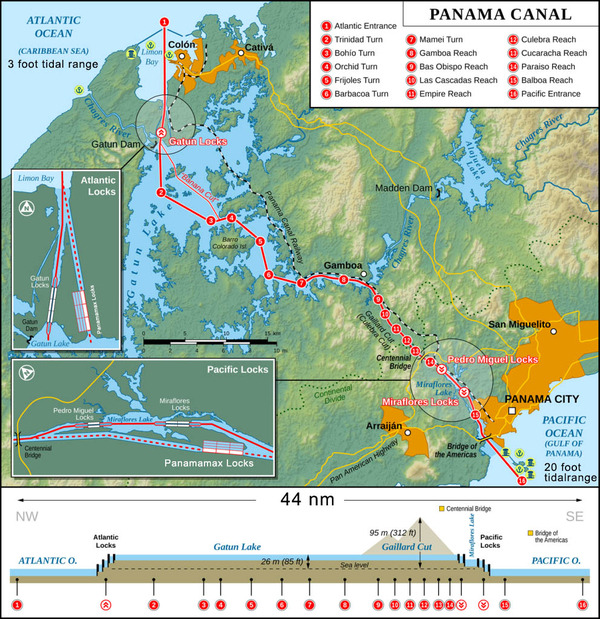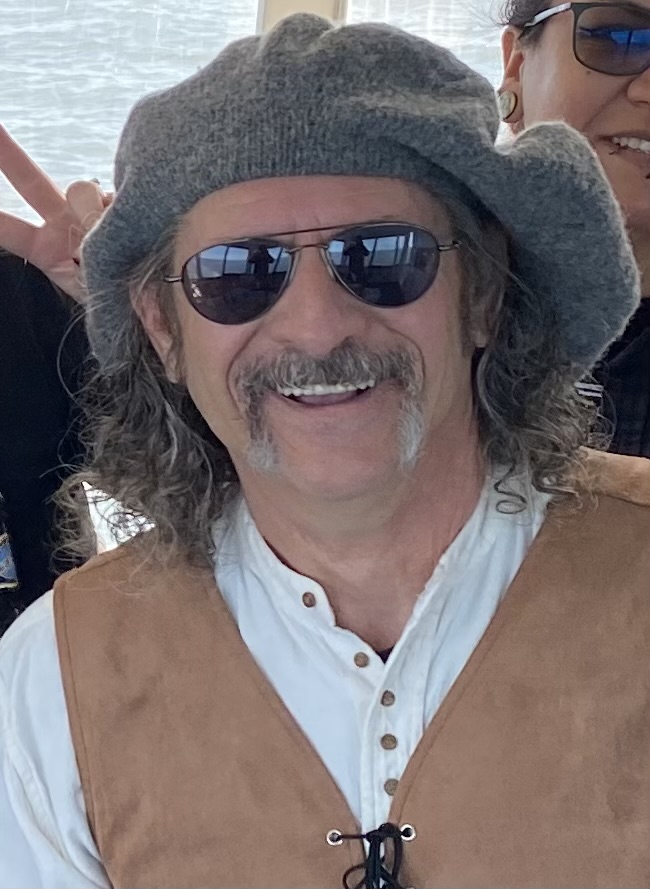GOLFO DE FONSECA
Navigation and Anchoring
- Charts: Use updated nautical charts; some areas may be poorly surveyed. Electronic charts supplemented with local knowledge are invaluable add satellite charts.
- Tides and Currents: Strong tides and currents, especially in narrow channels like those around Isla Meanguera, require attention.
- Anchorages:
- La Unión (El Salvador): A protected harbor with access to town facilities.
- Isla Meanguera: Quiet and scenic, with excellent shelter.
- Amapala (Honduras): Offers a cultural and historic stop, though anchoring can be exposed.
- Depths: Shallow areas near estuaries and mangroves require vigilance.
Weather and Climate
When the papagayo winds develop they can spill over and entering the bay in a NE direction may not be viable as you can expect gusts up to 40 knots from the E / ENE / NE / and NNE in which case hugging the El Salvador Coast and hugging the El Salvador Coast – we have had reports of folks anchored in the Lee of Isla el tigre dealing with tidal flow and currents and having to FIGHT their way out across the bay to the North West coast of Nicaragua.
- Dry Season (Nov-Apr): Ideal for cruising with steady winds and predictable weather.
- Rainy Season (May-Oct): Increased storms and squalls. Monitor for tropical depressions.
- Papagayo Winds: These strong offshore winds can affect the southern end of the gulf. Stay updated on forecasts.
Wildlife and Ecology
- Mangroves: Rich ecosystems, ideal for exploring via dinghy.
- Birdwatching: Abundant seabirds and migratory species.
- Marine Life: Dolphins and sea turtles are common, but fishing pressure has impacted stocks.
Cultural and Shore Activities
- Isla Meanguera: Quiet villages and secluded beaches.
- Amapala: Colonial history, hiking opportunities, and a chance to interact with locals.
- Local Cuisine: Enjoy fresh seafood and regional dishes at small coastal towns.
Facilities and Supplies
- Fuel and Water: Available in La Unión and Amapala but not widespread elsewhere.
- Repairs: Minimal repair facilities; La Unión is the best bet for basic services.
- Provisioning: Limited; stock up before entering the gulf.
Safety
- Security: The region is relatively safe, but petty theft can occur. Secure valuables and avoid leaving dinghies unattended.
- Health Precautions: Mosquitoes can carry diseases; carry repellent and take precautions against malaria and dengue.
WINDS
CURRENTS
SWELL AND WAVES
AMAPALA, ISLA TIGRE 🇭🇳 HONDURAS
AMAPALA, ISLA TIGRE 🇭🇳 HONDURAS SIGN
SV DIVERGENT framed by the letter ‘P’ & anchored just off the town of Amapala
Isla
Tigre is In Bahia Fonseca. Bahia Fonseca is uniquely shared by
three countries: El Salvador (to the north and west), Honduras
(generally in the center), and Nicaragua (to the south and east).
Isla Tigre is part of Honduras. Visiting vessels are required to
check into the country at their first port of call.
Trip Report from SV DIVERGENT:
Amapala,
Isla Tigre, Honduras! We had a short but wonderful time there and would
definitely go back if we were headed south again.
There are no mooring balls or marina, but we anchored with good holding and plenty of room near the historic Amapala pier.
It
was easy to check in and out with the port captain and immigration
office, both located on the pier. We recall the cost being less than 20
USD.
The
port captain told us they only get a few cruisers each year. There is a
lot of panga traffic to and from the island. As a result, we received a
lot of viewing attention, and people were very friendly.
There is easy dinghy landing next to the pier at low tide.
All the streets we walked on or saw were cobblestone.
Local transportation is mainly via tuk-tuks. We also saw locals on motorbikes and quads.
There were several small tiendas suitable for provisioning.
There is an ATM on the main street near the pier.
Our
exploration and experience were only within the town of Amapala. We did
not get a chance to see the rest of the small island. Amapala is a
no-frills, authentic working village; there are not many tourist
amenities (restaurants, etc.). It was all about the experience for us –
some of the highlights were:
–
The main street connected to the pier has a colorful canopy of
umbrellas, which was fun to have as a backdrop for pictures. (The pier
itself is also quite colorful!)
–
Taking a tuk-tuk ride through town to several tiendas for provisioning.
Our driver was a friendly young man who was all smiles and eager to
suggest where we could shop.
-Seeing interesting historical architecture.
-Watching the locals at work, at play, or at their homes.
UMBRELLAS OVER COBBLESTONE
Umbrellas offer shade and bright colors along the cobblestone paths
TUK-TUK
Three wheeled Tuk-Tuks are the taxis in Amapala
GARY AND ENA
Ena and Gary enjoying Amapala on their way north along the coast.
SY TIAMAT 🇺🇸 Stephanie & Owen – Fountaine Pajot 44’
Gary
BAY OF PANAMA
BAY OF PANAMA and PUNTA MALA
The Bay of Panama and Punta Mala present a fascinating yet challenging region for sailors, This area—an essential route for many cruisers heading towards the Panama Canal— has weather, tidal shifts and associated currents as navigational hazards.
Geographical Context
The Bay of Panama is a broad expanse of water on the Pacific side of Panama, stretching over 105 miles from Punta Mala in the west to the Pearl Islands and the Canal Zone in the east. Punta Mala, translating to “Bad Point,” serves as a formidable gateway, marking the southern entrance to the bay. Its name is not without reason; Punta Mala is notorious for strong currents, unpredictable winds, and choppy seas.
The transition through this region is often influenced by the interplay of oceanic and atmospheric conditions unique to the area. The convergence of the Humboldt and Panama currents contributes to the dynamic environment, creating conditions that can change rapidly.
Weather Patterns
Weather is the dominant factor shaping any voyage into the Bay of Panama and around Punta Mala. Understanding its seasonal patterns is crucial for a safe and efficient passage.
- The Dry Season (December to April):
- Also known as the “Trade Wind Season,” this period is characterized by strong northerly winds (known locally as “Papagayo winds”), which funnel down the Isthmus of Panama and into the bay.
- These winds can reach 20-30 knots, often accompanied by steep waves and short intervals, making the waters around Punta Mala particularly rough.
- Clear skies and lower humidity are typical, but the winds demand careful sail management and vigilant navigation.
- The Wet Season (May to November):
- The region experiences heavy rains, high humidity, and lighter, more variable winds during this time.
- Thunderstorms are frequent, bringing squalls with sudden wind shifts and downpours that can reduce visibility.
- Currents are less predictable, often influenced by runoff from Panama’s rivers and the seasonal rains.
- Transition Periods:
- The periods between seasons can bring erratic weather patterns, combining elements of both the dry and wet seasons.
- These transitions often pose challenges for less experienced sailors.
Navigational Hazards
Navigating the Bay of Panama and Punta Mala requires a keen eye and a good grasp of local conditions:
- Currents:
- The currents in this region can be powerful, with speeds exceeding 4 knots around Punta Mala.
- These currents often oppose prevailing winds, creating steep and confused seas that can challenge even experienced mariners.
- Tides:
- Panama has some of the largest tidal ranges in the Pacific, reaching up to 20 feet (6 meters) in the Bay of Panama.
- Timing passages around Punta Mala with the tides can significantly improve comfort and safety.
- Shoals and Reefs:
- Unmarked shoals and reefs, particularly near the Pearl Islands, can pose risks to navigation.
- Updated charts and reliable GPS systems are indispensable tools for avoiding these hazards.
- Marine Traffic:
- The approach to the Panama Canal is one of the busiest maritime zones in the world.
- Large vessels, including container ships and tankers, dominate the shipping lanes, necessitating constant vigilance and adherence to international navigation rules.
Sailing Around Punta Mala
- Timing:
- Timing your approach is key. Aim to pass Punta Mala at slack tide to minimize the effects of currents.
- Night passages can be advantageous due to calmer winds, but ensure you have the experience and equipment necessary for safe nighttime navigation.
Tides and Currents
The tidal currents set north and south throughout the Canal de la Mona and are UNPREDICTABLE!
A current of about 1-knot for the northerly and southerly currents in the Mona. In summer, when the trade wind has slackened and blows more from the east and east/southeast, a strong counter-current sets east off the southern coast of Hispaniola.
SWELL AND WAVES
- Sail Handling:
- Reef sails early to prepare for sudden gusts or squalls.
- Use heavier sails if available, as they can withstand the stress of choppy conditions better.
- Engine Use:
- Many sailors rely on their engine to help power through the strong currents around Punta Mala. Ensure your engine is well-maintained and that you have sufficient fuel reserves.
Final Approach to the Panama Canal
As you near the Panama Canal, maritime traffic increases significantly. Following these tips will help ensure a smooth transition:
- Communications:
- Monitor VHF channel 16 and designated traffic channels for instructions from the Panama Canal Authority.
- Anchorage Options:
- Popular pre-canal anchorages include La Playita and Balboa Yacht Club. These areas offer services and provisioning opportunities.
- Documentation:
- Have all necessary documentation prepared for canal transit, including proof of insurance and crew passports.
PAPAGAYO WINDS
PAPAGAYO WINDS
The Papagayo Winds are strong, seasonal winds that blow across the Pacific Ocean near Central America, particularly off the coasts of Nicaragua and Costa Rica. These winds can significantly affect sailors in the region, especially those traveling near the Gulf of Papagayo.
What Causes Papagayo Winds?
The winds are caused by a combination of:
- Pressure Differences: High-pressure systems over the Caribbean and low-pressure systems over the Pacific create a pressure gradient, funneling winds through gaps in the Central American mountain ranges, particularly around Lake Nicaragua.
- Topography: The gap between the mountains accelerates the winds, sometimes reaching gale force.
- Seasonality: Papagayo winds are most common during the dry season (December to April), coinciding with the northeast trade winds.
Characteristics of Papagayo Winds
- Strength: Winds can reach 20-50 knots, with occasional gusts exceeding 60 knots.
- Duration: They can last for hours or days, creating rough seas with steep, short-period waves.
- Direction: Typically blow from the northeast to the northwest, affecting coastal waters and up to 300 miles offshore.
How to Deal with Papagayo Winds
1. Planning
- Monitor Forecasts: Use reliable marine weather services to anticipate wind and wave conditions. The Gulf of Papagayo is a known hotspot, so check regional forecasts regularly - look for gusts forecasts (not wind) forcasts GFS / PWE .
- Seasonal Awareness: If possible, time your passage outside the peak wind season (April- May- November early December is typically calmer but you can encounter thunderstorms higher CAPE index and squalls).
2. Timing
- Sail Early: Winds are often strongest in the afternoon. Plan to sail in the early morning when they are likely to be weaker.
- Wait It Out: If winds are exceptionally strong, consider delaying your passage until conditions improve. Anchor with plenty of scope and recover.
3. Navigation
- HUG the Coast: If conditions permit, keep as minum a safe distance from the coastline to avoid the square waves of the wind acceleration near land.
- Seek Shelter: Anchor in protected bays or marinas. The Gulf of Papagayo and the coast of Nicaragua has some anchorage where you can anchor but be prepared to deal with 35+ knots
4. Adjust Your Sailing
- Reef : double ripple reefed mains Reduce sail area before the winds pick up to maintain better control
- Pointing: Sail at an angle to the wind to minimize the pounding from waves.
- Balance the Load: Properly trim your sails and adjust weight distribution to improve stability.
5. Safety Precautions
- Secure Gear: Ensure all loose items are stowed, as rough seas can toss unsecured items around.
- Crew Preparedness: Keep your crew briefed and equipped with safety gear, including harnesses and life jackets.
- Engine Check: Be ready to motor if necessary, as high winds and waves may require additional power.
6. Resources
- Local Knowledge: Consult with local marinas, harbor masters, or fellow sailors for advice on navigating the region during these winds.
- Apps and Tools: Use wind forecasting tools like PredictWind, NOAA or Windy, offshore weather forecasts for real-time updates.
FLEET UPDATE 2024-12-29
|
|
|
|
|
|
|
|
|
|
|
|
|
|
|
|
|
|
|
|
|
|
|
|
|
|
|
|
|
|
|
|
|
|
|
|
|
|
|
|
|
|
|
|
|
|
|
|
|
|
![]()
SOUTH PACIFIC
Join the Ocean Posse for Your South Pacific Crossing!
Set sail on your greatest adventure with the Ocean Posse! Our program is tailored to make your South Pacific crossing seamless, enjoyable, and cost-effective. Here’s what you’ll gain:
- Planning Tools: Navigate your journey with precision using our curated resources and expert guidance.
- Marina Discounts: Enjoy exclusive savings at 12 marinas strategically located along your route.
- Vessel Tracking: Stay connected with our real-time tracking system, ensuring your safety and visibility throughout the voyage.
- Online Seminars: Access webinars on topics ranging from weather patterns to provisioning tips, led by seasoned mariners.
- Satellite Charts: Get detailed satellite imagery and updates to optimize your navigation.
- Knowledge Group: Join a dynamic community of seafarers who share insights, experiences, and support.
The South Pacific is calling—are you ready to answer?
➡️ Learn more and join the fleet today!
BENEFITS OF of joining the Ocean Posse
SAVE TIME – SAVE MONEY – and get the best and most up to date INFORMATION !
Here are the benefits (pre-season aka during hurricane season) vs in season ) explained
| BENEFITS FOR YOU, YOUR YACHT & YOUR CREW |
|
|
| ✔️ Up to date and verified information by fellow yachts | ✔️ | |
| 📊 Communications focused on facts, not opinions or unsolicited advice | ✔️ | |
| 💰 Save real money at 70+ Marinas with discounts * | ✔️ | |
| 🛰️ Free vessel and fleet tracking courtesy of Predict Wind | ✔️ | |
| 🚩 Free Burgee | ✔️ | |
| 💰 Save with service providers and chandleries | ✔️ | |
| 🕵️ dedicated, experienced and discounted Canal and clearing in agents | ✔️ | |
| 🗺️ Free aid to navigation 150 Gb OpenCPN satellite charts (mac/pc/android) | ✔️ | |
| 💰 Save Money on parts with a Westmarine Pro Discount | ✔️ | |
| 💰 Save Money with a Predict Wind Pro Discount | ✔️ | |
| 🗺️ Free Printable Reference Charts emergency backup to your electronics | ✔️ | |
| 📹 Free Video Seminars on destinations from those who are there | ✔️ | |
| 🌩️ Top weather routing avail by Marine Weather Center Chris Parker | ✔️ | |
| ⛵ Community of voyagers all are welcome, kids, single-handers, pets | ✔️ | |
| ⚓ Peer support in emergencies with escalation procedures | ✔️ | |
| 🛈 Fleet Updates via email – free | ✔️ | |
| 🏆 Fun Award Categories | ✔️ | |
| 📍 Free access to GOOD NAUTICAL Anchorage reports | ✔️ | |
| ☎️ Free Weekly live calls on Mondays via dedicated LINE.me group | ✔️ | |
| 💬 Free 24/7 LINE group channel | ✔️ | |
| 🌊 Benefit from the latest information and prior experience participants | ✔️ | |
| 🔭 Be part of a fleet of sensor for those who come behind you or meet | ✔️ | |
| 🚷 Always priority traffic – for participants by participants | ✔️ |
Sunken cannons at Fort George Cay 🇹🇨 TURKS AND CAICOS
Fort George Cay: A Gateway to History
Nestled in the azure waters of the Turks and Caicos Islands, Fort George Cay is an uninhabited island with a rich history dating back to the 18th century. This tiny cay, located between Pine Cay and Dellis Cay, holds a remarkable secret beneath its pristine sands and turquoise waters—sunken cannons that speak volumes about its storied past.
Once a strategic British military outpost, Fort George Cay was established during the late 1700s to protect the lucrative salt trade and fend off pirate attacks. Over time, the fort fell into disuse, and nature reclaimed much of the site. Today, the remnants of its fortifications and the cannons scattered offshore form an underwater museum, offering a captivating glimpse into a bygone era.
Exploring the Sunken Cannons
Location and Accessibility
The sunken cannons are located just off the beach of Fort George Cay in shallow, crystal-clear waters. Accessible by boat or kayak from Providenciales or surrounding islands, the site is perfect for snorkeling or diving, providing visitors with an intimate experience with history.
The Cannons' Historical Significance
The cannons, submerged for centuries, are relics of British maritime defense. Cast from iron, they were likely part of the fort's original arsenal, positioned to deter enemy ships from approaching the cay. Their precise origins remain a subject of speculation, with historians suggesting they were transported from England or salvaged from British naval vessels.
Snorkeling Among the Cannons
Snorkelers can glide effortlessly over the site, where the cannons lie half-buried in the sand, surrounded by vibrant coral reefs and an array of marine life. The visibility in the waters around Fort George Cay is exceptional, often exceeding 100 feet, making it easy to admire the intricate details of the cannons and their coral-encrusted surfaces.

Fort George Cay's Role in Maritime Defense
The establishment of Fort George Cay was pivotal during the age of piracy and colonial expansion. Turks and Caicos was a haven for pirates in the 17th and 18th centuries, and the British sought to secure the islands to protect their salt trade routes. The fort was strategically placed to monitor and defend against potential threats, including Spanish forces and rogue privateers.
Though small in scale, the fort likely housed a modest garrison equipped with muskets, swords, and cannons. The sunken cannons represent the tangible remnants of these defensive efforts, standing as silent witnesses to the turbulent history of the Caribbean.
Marine Life Around the Cannons
One of the most enchanting aspects of visiting the sunken cannons is the thriving marine ecosystem that has developed around them. Over centuries, the cannons have transformed into artificial reefs, hosting a vibrant community of marine life, including:
- Colorful Fish: Schools of sergeant majors, parrotfish, and wrasse dart among the cannons.
- Corals and Sponges: Brain coral, sea fans, and sponges add texture and color to the underwater landscape.
- Sea Turtles and Rays: Green turtles and southern stingrays are frequent visitors to the area, adding to the allure for snorkelers.
This convergence of history and nature makes the sunken cannons a unique site where visitors can appreciate both the past and the present.
The Mystery of the Sunken Cannons
Despite their prominence, much about the cannons remains a mystery. Why were they abandoned? Were they intentionally sunk, or did they slip from their original positions over time? Some theories suggest that the cannons were discarded into the sea when the fort was decommissioned, while others believe they were lost during storms or shipwrecks.
These unanswered questions add an air of intrigue to the site, inviting visitors to speculate and imagine the events that might have unfolded centuries ago.
Preservation and Conservation Efforts
The sunken cannons are not just historical artifacts; they are also part of the fragile marine environment. Efforts to preserve the site include limiting human impact and promoting sustainable tourism practices. Visitors are encouraged to admire the cannons without touching or disturbing them, ensuring that future generations can experience their magic.
The Turks and Caicos National Museum has also played a role in documenting and preserving the island's history, providing valuable context for those interested in learning more about Fort George Cay and its significance.
New Archaeological Exploration of Ft. George Cay
Planning Your Visit
Best Time to Visit
The best time to explore the sunken cannons is during the dry season, from November to April, when the waters are calm and visibility is at its peak. Early mornings or late afternoons are ideal for avoiding crowds and enjoying a serene snorkeling experience.
How to Get There
Visitors can reach Fort George Cay by chartering a boat from Providenciales or participating in organized tours that include snorkeling gear and guides. Kayaking or paddleboarding are also popular options for adventurous travelers.
What to Bring
- Snorkeling gear
- Waterproof camera
- Sunscreen (reef-safe)
- Water shoes for exploring the beach
Fort George Cay Beyond the Cannons
While the sunken cannons are the star attraction, Fort George Cay offers much more to explore. The island's white sandy beaches, mangroves, and untouched natural beauty make it a haven for nature lovers. Birdwatchers can spot herons, ospreys, and other coastal species, while beachcombers may discover shells and other treasures washed ashore.
The cay is also steeped in folklore, with tales of pirate treasure and shipwrecks adding to its mystique. Whether you’re a history buff, a marine enthusiast, or simply seeking a tranquil escape, Fort George Cay has something for everyone.
Why Visit the Sunken Cannons?
The sunken cannons at Fort George Cay offer a unique blend of history, adventure, and natural beauty. They are a reminder of the island's strategic importance during colonial times and a testament to the enduring allure of the Caribbean. For those who heed the call of the sea, this site promises an unforgettable journey into the past, set against the backdrop of one of the world's most stunning archipelagos.
Whether you’re a seasoned yachtsman, a curious snorkeler, or a first-time visitor, the sunken cannons at Fort George Cay are a must-see destination that will leave you with lasting memories and a deeper appreciation for the rich history of Turks and Caicos.
HOW TO - Steering without a rudder
Navigating Without a Rudder
Loss of steering is among the most frequent challenges sailors encounter offshore and is even more common closer to shore, where floating debris poses a greater risk. While an emergency rudder is a potential solution, its practicality is often hindered by cost, bulk, and the challenges of deploying it in adverse conditions. For catamarans, disconnecting a jammed rudder is straightforward if it's stuck straight, but what if it’s jammed hard over? This was the unfortunate scenario faced by the Alpha 42 catamaran Be Good Too in 2014.
Steering with drogues, however, offers a viable alternative. Tests have shown that even with a jammed or locked rudder, drogues can be used to effectively control a boat, enabling sailing to windward in moderate conditions. By adjusting sail trim and drogue position, directional stability and control can be restored. But questions remain: What if the rudder is jammed at an angle? Are all drogues suitable for this purpose? What size and setup work best?
Testing Drogues for Steering
Our tests involved the Seabrake GP24L, Galerider 30, Delta Drogue 72, and a towed warp, using a 34-foot catamaran to simulate rudder failure scenarios. Drogues were deployed on 100 feet of polyester double-braid rope with an 8-foot chain weight, allowing us to assess their drag characteristics at different speeds. We tested each setup in various wind conditions, adjusting bridle positions and sail trim to evaluate performance across multiple points of sail.
Key Findings
Drogue Selection: A drogue that generates too much drag slows progress, while one with insufficient drag offers poor control.
Galerider 30: The most stable and effective in moderate conditions but overpowered in winds above 15 knots. A larger model (Galerider 36) is recommended for stronger conditions.
Seabrake 24: Effective in winds over 20 knots, particularly with a jammed rudder. Its stability diminishes on shorter rodes, but longer scopes improve performance.
Delta Drogue 72: A robust and proven design, though prone to skipping at shorter scopes. It quickly re-engages, maintaining directional control.
Towed Warps: While warps and chains can serve as makeshift drogues, they generally lack the drag needed for effective steering without extensive additions.
Deployment: Effective control often depends on deploying the drogue from a bridle, with spinnaker sheets or lines adjusted for optimal positioning. Experimentation is key, as boat characteristics greatly influence performance.
Practical Considerations:
Steering with a drogue is slower and more labor-intensive than conventional sailing.
While pointing ability is reduced, a drogue allows a stable course to be maintained, even enabling progress to windward in moderate conditions.
Practicing deployment and adjustment in calm conditions is essential to ensure preparedness in an emergency.
Conclusion
Drogues are not just for storm survival; they are invaluable tools for emergency steering, particularly in coastal waters where steering loss is a significant risk. While they cannot replicate the precision of a functioning rudder, drogues offer a practical solution to regain control, stabilize the vessel, and navigate toward safety.
Every sailor should consider carrying a drogue suitable for their vessel’s size and practice its use to build confidence and skill in this critical seamanship technique.
FLEET UPDATE 2024-12-22
|
|
|
|
|
|
|
|
|
|
|
|
|
|
|
|
|
|
|
|
|
|
|
|
|
|
|
|
|
|
|
|
|
|
|
|
|
|
|
|
|
|
|
|
|
|
|
|
|
|
|
|
![]()
Old Havana and its Fortification System 🇨🇺 CUBA
Old Havana (La Habana Vieja) stands as a timeless testament to Cuba’s rich history and its strategic importance during the colonial era. Founded in 1519 by the Spanish, the city became a significant port for trade between the New World and Europe. Its architectural splendor, cobbled streets, and well-preserved fortifications reflect centuries of cultural exchange and military ingenuity. In 1982, Old Havana and its Fortification System were designated a UNESCO World Heritage Site, recognizing their outstanding universal value.
This essay explores the historical evolution, architectural brilliance, cultural significance, and ongoing preservation of Old Havana and its Fortification System.
Historical Evolution
The Founding of Havana
Havana’s establishment in 1519 marked the beginning of its transformation into a vital hub of the Spanish Empire. Strategically located on the northwest coast of Cuba, Havana quickly became a key stopover for Spanish galleons laden with treasures from the Americas. Its natural harbor offered protection and served as an ideal base for naval operations.
The Threat of Pirates
By the 16th century, the Caribbean was rife with piracy. Havana’s prominence made it a prime target for attacks by corsairs and buccaneers, including the infamous Francis Drake. These threats underscored the need for robust defenses, leading to the construction of an intricate fortification system.
The Fortification Era
From the late 16th to the 18th century, Havana’s defenses were systematically expanded. Spanish engineers designed an array of fortresses, walls, and towers to safeguard the city. Key among these were Castillo de la Real Fuerza, Castillo de los Tres Reyes del Morro, and La Cabaña Fortress. These structures not only protected Havana but also showcased the Spanish Empire’s military engineering prowess.
The Fortifications of Old Havana
Castillo de la Real Fuerza
Built between 1558 and 1577, Castillo de la Real Fuerza is the oldest stone fort in the Americas. Its strategic position near the harbor’s entrance was intended to deter pirate attacks. While its effectiveness was limited due to its location, the fortress’s elegant design and iconic weather vane, “La Giraldilla,” have made it a symbol of Havana.
 Castillo de los Tres Reyes del Morro
Castillo de los Tres Reyes del Morro
Constructed in 1589, this fortress guarded the entrance to Havana Bay. Its imposing walls and strategic placement made it a formidable deterrent to invaders. The lighthouse, added in the 19th century, remains an enduring landmark.

San Salvador de la Punta
Located on the western side of Havana Bay, this smaller fortification complemented El Morro in protecting the harbor. A chain stretched between the two fortresses could block enemy ships from entering the bay.
 Fortaleza San Carlos de la Cabaña
Fortaleza San Carlos de la Cabaña
Built in the 18th century, La Cabaña Fortress is one of the largest in the Americas. Its construction reflected advances in military architecture, featuring bastions, barracks, and moats. Today, it serves as a cultural and historical center, hosting events like the nightly cannon ceremony.
City Walls
The walls encircling Old Havana were completed in the 17th century to protect the growing city. These massive stone barriers, equipped with gates and bastions, encapsulated the city’s colonial core. Although much of the walls were dismantled in the 19th century to accommodate urban expansion, remnants remain as reminders of Havana’s fortified past.
Architectural Brilliance
The fortifications of Old Havana exemplify Spanish colonial military architecture. They incorporate elements of the Italian bastion system, adapted to the tropical climate and local materials. Thick stone walls, angular bastions, and strategic positioning maximized defensive capabilities while minimizing vulnerabilities.
The use of coral limestone, quarried locally, provided durability and a distinctive aesthetic. Intricate carvings, battlements, and lookout towers added to the grandeur of these fortresses, reflecting the Spanish Crown’s determination to project power and wealth.
Cultural and Historical Significance
A Hub of Trade and Power
Havana’s fortifications underscored its role as a linchpin of Spanish colonial power. The city’s protected harbor became a gathering point for treasure fleets, which carried vast riches to Spain. This wealth fueled the Spanish Empire and shaped global trade routes.
Symbol of Resilience
The fortresses of Old Havana bear witness to the city’s resilience against external threats. Despite numerous attacks, including the British occupation of Havana in 1762, the city endured and thrived, becoming a beacon of colonial ingenuity and determination.
A Cultural Mosaic
Old Havana’s fortifications are part of a broader urban landscape that reflects centuries of cultural exchange. Spanish, African, and indigenous influences converge in the city’s architecture, music, and traditions. The preservation of these fortifications has helped safeguard this cultural heritage for future generations.
Preservation and Restoration
UNESCO Designation
The inclusion of Old Havana and its Fortification System on the UNESCO World Heritage List in 1982 highlighted their global significance. This recognition spurred efforts to preserve and restore the city’s historic core.
Restoration Efforts
Since the 1990s, extensive restoration projects have been undertaken to rehabilitate Havana’s fortifications and historic buildings. The Office of the Historian of Havana, led by Dr. Eusebio Leal, played a pivotal role in these efforts. Funding from international organizations and partnerships has enabled the meticulous restoration of key landmarks.
Challenges
Preservation efforts face numerous challenges, including limited resources, environmental degradation, and the pressures of modern urban development. Rising sea levels and hurricanes pose additional threats to the integrity of Havana’s fortifications.
Old Havana and its Fortification System
Introduction
Old Havana (La Habana Vieja) stands as a timeless testament to Cuba’s rich history and its strategic importance during the colonial era. Founded in 1519 by the Spanish, the city became a significant port for trade between the New World and Europe. Its architectural splendor, cobbled streets, and well-preserved fortifications reflect centuries of cultural exchange and military ingenuity. In 1982, Old Havana and its Fortification System were designated a UNESCO World Heritage Site, recognizing their outstanding universal value.
This essay explores the historical evolution, architectural brilliance, cultural significance, and ongoing preservation of Old Havana and its Fortification System.
Historical Evolution
The Founding of Havana
Havana’s establishment in 1519 marked the beginning of its transformation into a vital hub of the Spanish Empire. Strategically located on the northwest coast of Cuba, Havana quickly became a key stopover for Spanish galleons laden with treasures from the Americas. Its natural harbor offered protection and served as an ideal base for naval operations.
The Threat of Pirates
By the 16th century, the Caribbean was rife with piracy. Havana’s prominence made it a prime target for attacks by corsairs and buccaneers, including the infamous Francis Drake. These threats underscored the need for robust defenses, leading to the construction of an intricate fortification system.
The Fortification Era
From the late 16th to the 18th century, Havana’s defenses were systematically expanded. Spanish engineers designed an array of fortresses, walls, and towers to safeguard the city. Key among these were Castillo de la Real Fuerza, Castillo de los Tres Reyes del Morro, and La Cabaña Fortress. These structures not only protected Havana but also showcased the Spanish Empire’s military engineering prowess.
The Fortifications of Old Havana
Castillo de la Real Fuerza
Built between 1558 and 1577, Castillo de la Real Fuerza is the oldest stone fort in the Americas. Its strategic position near the harbor’s entrance was intended to deter pirate attacks. While its effectiveness was limited due to its location, the fortress’s elegant design and iconic weather vane, “La Giraldilla,” have made it a symbol of Havana.
Castillo de los Tres Reyes del Morro
Constructed in 1589, this fortress guarded the entrance to Havana Bay. Its imposing walls and strategic placement made it a formidable deterrent to invaders. The lighthouse, added in the 19th century, remains an enduring landmark.
San Salvador de la Punta
Located on the western side of Havana Bay, this smaller fortification complemented El Morro in protecting the harbor. A chain stretched between the two fortresses could block enemy ships from entering the bay.
La Cabaña Fortress
Built in the 18th century, La Cabaña Fortress is one of the largest in the Americas. Its construction reflected advances in military architecture, featuring bastions, barracks, and moats. Today, it serves as a cultural and historical center, hosting events like the nightly cannon ceremony.
City Walls
The walls encircling Old Havana were completed in the 17th century to protect the growing city. These massive stone barriers, equipped with gates and bastions, encapsulated the city’s colonial core. Although much of the walls were dismantled in the 19th century to accommodate urban expansion, remnants remain as reminders of Havana’s fortified past.
Architectural Brilliance
The fortifications of Old Havana exemplify Spanish colonial military architecture. They incorporate elements of the Italian bastion system, adapted to the tropical climate and local materials. Thick stone walls, angular bastions, and strategic positioning maximized defensive capabilities while minimizing vulnerabilities.
The use of coral limestone, quarried locally, provided durability and a distinctive aesthetic. Intricate carvings, battlements, and lookout towers added to the grandeur of these fortresses, reflecting the Spanish Crown’s determination to project power and wealth.
Cultural and Historical Significance
A Hub of Trade and Power
Havana’s fortifications underscored its role as a linchpin of Spanish colonial power. The city’s protected harbor became a gathering point for treasure fleets, which carried vast riches to Spain. This wealth fueled the Spanish Empire and shaped global trade routes.
Symbol of Resilience
The fortresses of Old Havana bear witness to the city’s resilience against external threats. Despite numerous attacks, including the British occupation of Havana in 1762, the city endured and thrived, becoming a beacon of colonial ingenuity and determination.
A Cultural Mosaic
Old Havana’s fortifications are part of a broader urban landscape that reflects centuries of cultural exchange. Spanish, African, and indigenous influences converge in the city’s architecture, music, and traditions. The preservation of these fortifications has helped safeguard this cultural heritage for future generations.
Preservation and Restoration
UNESCO Designation
The inclusion of Old Havana and its Fortification System on the UNESCO World Heritage List in 1982 highlighted their global significance. This recognition spurred efforts to preserve and restore the city’s historic core.
Restoration Efforts
Since the 1990s, extensive restoration projects have been undertaken to rehabilitate Havana’s fortifications and historic buildings. The Office of the Historian of Havana, led by Dr. Eusebio Leal, played a pivotal role in these efforts. Funding from international organizations and partnerships has enabled the meticulous restoration of key landmarks.
Challenges
Preservation efforts face numerous challenges, including limited resources, environmental degradation, and the pressures of modern urban development. Rising sea levels and hurricanes pose additional threats to the integrity of Havana’s fortifications.
Tourism
Old Havana and its fortifications attract millions of visitors each year. Tourists flock to explore the historic streets, marvel at the forts, and immerse themselves in the city’s vibrant culture. Guided tours, museums, and cultural events bring Havana’s history to life.
Educational Value
The fortifications serve as open-air classrooms, offering insights into colonial history, architecture, and maritime strategy. Educational programs and exhibitions help raise awareness about the importance of preserving cultural heritage.
Cultural Identity
For Cubans, Old Havana’s fortifications are more than relics of the past; they are symbols of national identity and pride. They embody the resilience, creativity, and enduring spirit of the Cuban people.
RSVP SOUTH PACIFIC SEMINAR
RSVP SOUTH PACIFIC SEMINAR JANUARY 15
Please fill out the form and we'll send you your ZOOM INVITE LINK TO JOIN
🌴 Dreaming of the South Pacific? 🌊
Join us on January 15 for an exclusive seminar about navigating the South Pacific route and the best strategies for making your way back.
📍 Discover:
- Key destinations and hidden gems of the South Pacific.
- Tips for safe and efficient route planning.
- Insights on weather patterns, provisioning, and customs.
- Expert first hand accounts from seasoned mariners and licensed captains.
🗓️ Date: January 15
⏰ Time: 16:00 ET
📍 Location: ZOOM































